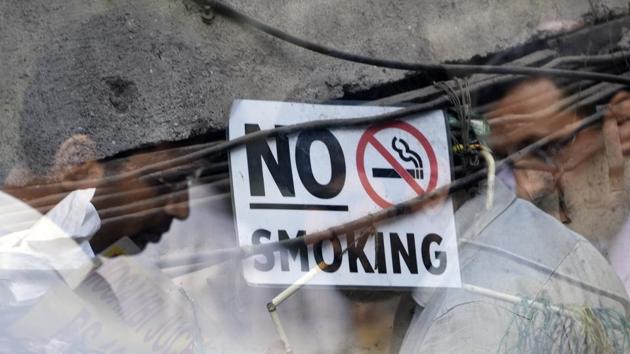Despite ban by govt, militants, tobacco use is climbing in Assam and Manipur
Tobacco consumption has increased from 39.3% to 48.2% in six fiscals since 2009-10 in Assam and from 54.1% to 55.1% in Manipur.
Ban on tobacco consumption by legitimate and underground governments just does not work. Assam and Manipur are prime examples.

These two north-eastern states and Tripura have bucked the downtrend in India’s tobacco use – from 34.6% in 2009-10 to 28.6% in 2016-17.
According to round two of Global Adult Tobacco Survey (GATS2) for the region, tobacco consumption in Assam has increased from 39.3% to 48.2% in six fiscals since 2009-10. Tripura registered an increase from 55.9% to 64.5% and Manipur from 54.1% to 55.1% during this period.
The data is ironical for Assam where the government had passed the Assam Health (Prohibition of Manufacturing Trade, Advertisement, Storage, Distribution, Sale and Consumption of Zarda, Gutkha, Panmasala etc. containing Tobacco) Act in 2013.
That year, the Manipur Cabinet too had decided to ban sale of cigarettes and other tobacco products in the state, where some of 62 extremist groups had already imposed a “ban” on smoking and consumption of zarda and gutkha.
“This shows that awareness campaigns work better than crackdowns and other punitive measures,” Arup Saikia of Voluntary Health Association of Assam said.
Anti-tobacco campaigns and warning labels on cigarette and smokeless tobacco packets have had a positive impact. For instance, the mean age of initiation to tobacco has increased from 17.9 in GATS1 (2009-10) to 18.9 years in GATS2.
Similarly, 68.9% cigarette smokers thought about quitting because of warning label on cigarette packets compared to 36.8% during GATS1. Warning labels seemed to have worked more for bidi users with 58.6% during GATS2 deciding to quit compared to only 11% during GATS1.
“Findings from GATS2 have added substantially to the knowledge about tobacco use in the north-eastern states and will be a valuable source of information for strengthening tobacco control policies and prevention programmes in the region,” Assam’s health minister Himanta Biswa Sarma said.
But Sarma was unhappy when the Gauhati high court had in October struck down a four-year-old anti-tobacco law. He labelled it as a major blow to cancer prevention.
Tobacco is believed to be one of the primary reasons of high cancer prevalence in the Northeast. Mizoram is often called India’s cancer capital, as the disease has been killing more than 700 people there annually since 2012-14.
The state has the highest incidence of four types of cancer – hypopharynx, tongue, stomach and esophageal – in the world.
According to Population Based Cancer Registries, Mizoram records an average 1,552 new cancer cases annually, which is 0.14% of the state’s total population of 1,091,014 according to the 2011 census.





